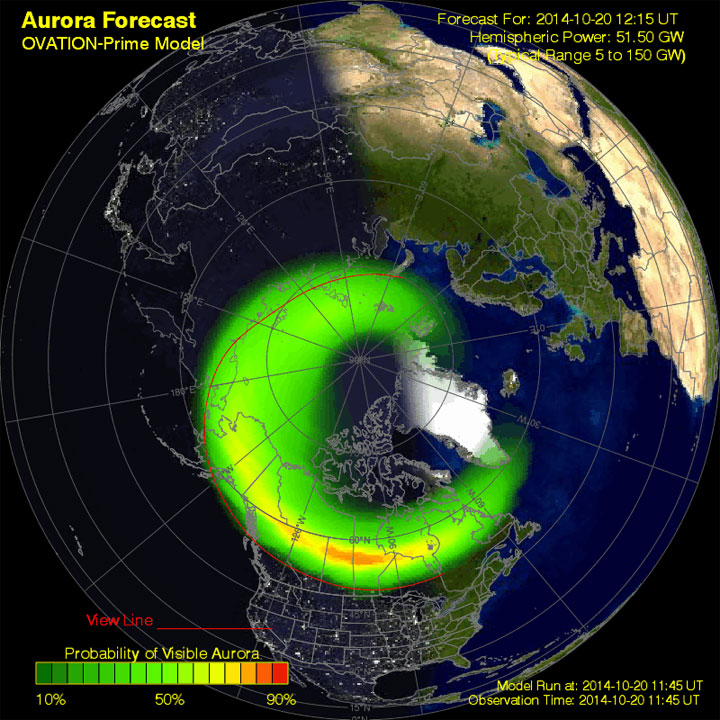TORONTO – A sunspot that could fit several Earths is slowly turning towards Earth — and we might see some action.

Sunspots are the home of solar flares. Solar flares — a release of magnetic energy from the sun — cause radio blackouts. They are also linked with coronal mass ejections (CME), massive releases of plasma.
Solar flares can reach Earth within hours; coronal mass ejections take days.
But when the particles from these two events reach Earth, they interact with our magnetosphere and give us some stunning displays of northern lights.
READ MORE: How solar storms could leave us in the dark
In fact, some places have seen some of these great displays over the past couple of days, including Canada, Norway and even down under in Tasmania, Australia.
The sun produced an X-class flare — the most powerful of solar flares — on Sunday, which caused some radio blackouts over Asia and Australia. The flare wasn’t directed at Earth, however it did give us a glancing blow.
READ MORE: Why do we get the northern lights?
The Kp Index, which measures disturbances in Earth’s magnetosphere, is already at 5. That’s good news for Canadians. High Kp indexes — 4 or higher — means that we have a greater chance of seeing the northern lights.
But a second element also needs to be in place for us to see the northern lights, or aurora borealis. It’s the auroral hole. Think of it as a giant doughnut over the North Pole: if it swells and extends further south that means we get to see the northern lights. But if it remains small and just lies over the north, it means that you have to go further north to see them.
Following the X-flare, two more flares occurred afterwards, though they were weaker (classified as M-flares). Though not as powerful as X-class flares, they still produce enough energy to cause short radio blackouts and northern lights.
As the giant sunspot turns towards Earth, it puts us in the cross-hairs for these flares or coronal mass ejections.
So keep your eyes on the sky in the days ahead and remember to check Globalnews.ca for updates.




Comments